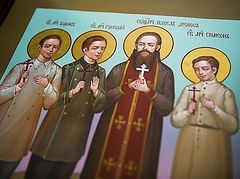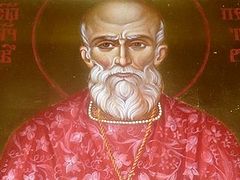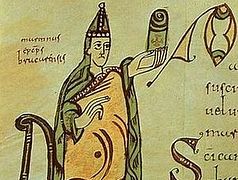Moscow, April 5, 2019
 New Martyrs Archpriest Andrei Zimin (left), Fr. Paul Kushnikov (center), Fr. Nikolai Zavarin (right)
New Martyrs Archpriest Andrei Zimin (left), Fr. Paul Kushnikov (center), Fr. Nikolai Zavarin (right)
The Holy Synod of the Russian Orthodox Church met yesterday at Danilov Monastery in Moscow under the chairmanship of His Holiness Patriarch Kirill of Moscow and All Russia. The bishops made a number of decisions on a wide range of issues. The full report is published on the official site of the Russian Church.
Most notably, the Synod heard a report on the ongoing situation in Ukraine, and several reports on new saints to be added to the Synaxis of New Martyrs and Confessors of the Russian Church.
Regarding Ukraine, the Synod resolved to express its full support for the Church and the statement that its Synod issued on Wednesday, in which it noted that Constantinople’s autocephaly project has proved a failure and thus called on the Patriarchate to rescind the tomos of autocephaly and to begin working to correct its mistakes.
The Russian Synod also resolved “To emphasize that the fullness of the Russian Orthodox Church highly values the courage and firmness shown by the episcopate, clergy, monastics, and pious faithful of the Ukrainian Orthodox Church in the conditions of persecution unleashed against it by the current state authorities of Ukraine.”
The hierarchs also heard reports from His Grace Bishop Pankraty of Troitsk, the abbot of Valaam and chairman of the Synodal Commission for the Canonization of Saints, on four hieromartyrs proposed to be glorified among the New Martyrs and Confessors of the Russian Church and resolved to glorify them all.
***
Archpriest Andrei Zimin was added to the Synaxis of New Martyrs and Confessors and will also be commemorated on January 5/18, the day of his martyric death.
Fr. Andrei was born in 1872 and was ordained to the diaconate and priesthood in 1894. He was zealous in preaching and conducting conversations with parishioners and also served as a catechist. In Chernigovka, he oversaw the construction of a one-year ministry school, and in his first ten years serving as head of the local deanery, the number of parishes doubled. He was twice awarded by the tsar for his labors.
He was held hostage by Bolsheviks for a month in 1919, enduring humiliations and insults. He was released home in July, but a few months later, on the feast of Theophany in January, armed men broke into his house and began to torture him and his family. His wife, mother-in-law, and daughters were shot, while Fr. Andrei was thrown to the ground. The men put his door on his chest and stood on it, crushing Fr. Andrei with their weight.
According to a relative, Fr. John Konoplev, Fr. Andrei had foreseen his martyrdom in a dream. The bodies of those murdered were buried in a common grave by the church. The exact spot is lost today, but parishioners have erected a memorial cross on the approximate spot, to which pilgrims come to pray.
Fr. Gregory Nikolsky was also added to the Synaxis of New Martyrs and Confessors and will also be commemorated on June 27/July 10, the day of his martyrdom.
He was born in 1854 and was ordained to the diaconate and priesthood in 1883, serving in various localities in the Astrakhan Diocese, taking an active part in the local branch of the missionary society. He often visited a local monastery to enjoy time in solitary prayer, and from 1915 until his repose he served at the St. Mary Magdalene Hermitage in the Kuban Governorate, heading the school of the women’s department of the Kuban correctional shelter that operated there. He also cared for the wounded soldiers at the monastery’s hospital.
He was known as a zealous pastor, teacher, and church builder. He was awarded by diocesan authorities many times.
Kuban was captured by the Bolsheviks in the summer of 1918. They carried out regular massacres of the clergy, and on June 27, they came to the monastery and arrested Fr. Gregory, who had just finished serving the Divine Liturgy. They severely beat him, and when he tried to cross himself they struck his hands and then shot him in the mouth with a revolver.
The memory of Fr. Gregory is especially remembered at the restored St. Mary Magdalene’s Monastery where they regularly serve panikhidas for him.
Fr. Paul Kushnikov was also added to the Synaxis of New Martyrs and Confessors and will also be commemorated on February 23/March 8, the day of his martyrdom.
He was born in 1880 and was ordained to the diaconate and priesthood in 1913, serving in the Novgorod Governorate for the next five years until his martyric repose. During the First World War and the revolution, he cared both for the people’s souls and for their bodies, organizing a parish shop that distributed food among the parishioners.
In 1917, some of his parishioners denounced him to the authorities and he was charged with advocating disobedience to the new government, though he was acquitted of this charge. On February 22, 1918, he was unexpectedly arrested and accused of concealing weapons for the white guards. Although nothing was found during a search, he was taken the next day to the local swamp and was shot.
Fr. Nikolai Zavarin was also added to the Synaxis of New Martyrs and Confessors and will also be commemorated on August 6/19, the day of his martyrdom
Fr. Nikolai was born in 1878. He served as a cantor and teacher in several parish schools throughout the Vologda Governorate before being ordained to the diaconate in 1916. In 1926, in the midst of heavy persecutions against the Church, he was ordained to the priesthood.
In 1931, he was sentenced to one year imprisonment for non-payment of arrears, but was later acquitted and released at the request of his daughter Nadezhda. He was arrested again in November 1932 for “anti-Soviet activities” and was sentenced to five years in prison, though he was again released early, in 1933.
The Soviet authorities tried many times to close his parish, though Fr. Nikolai and his parishioners always somehow found a way to keep it open or to soon reopen it. On February 16, 1937, Fr. Nikolai and his daughter were arrested, accused of organizing a counter-revolutionary group among Church people and other anti-Soviet activities. During his arrest and search he was asked if he had any weapons. He responded that his weapons are the Gospel and religion, in whose name he fights. Fr. Nikolai refused to admit any guilt or to accuse anyone else, including false witnesses.
He was shot on August 19, 1937.
***
For all four new saints, the Holy Synod also resolved that in the case of the finding of their remains, they will be honored as holy relics, and that icons be painted of the new saints according to the precepts of the Seventh Ecumenical Council.
Follow us on Facebook!



